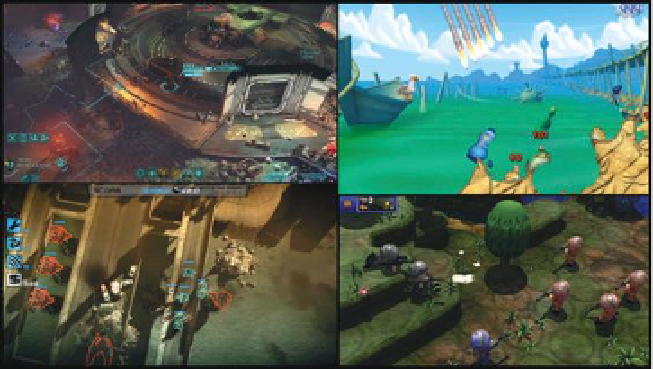Game Development Reference
In-Depth Information
Types of Strategy Games
Although the genre of strategy games is broad and continually
developing, there are signii cant distinctions among styles of
gameplay. Leaving out board-based games such as chess, checkers, and
backgammon, this genre of ers two pairs of unique characteristics: real
time or turn-based, and tactical or strategic.
Real Time or Turn-Based
Real time
means just that: everything occurs in real time and happens
at the same time. An arcade game is real time. Even if a game is an MMO,
players usually compete simultaneously. Real time heightens the stress
and intensity of the game as players try to complete goals faster than their
opponents.
Turn-based
games take the approach of board or card games
in that players take turns making moves, and only one player moves at a
time. If competing against an AI player (or a very patient friend), a player
could theoretically take as much time as he or she needed. This type of
game usually focuses on a bigger overall picture and advanced planning.
Tactical or Strategic
In
tactical
games, the gameplay (or gameplay section) focuses on
maneuvering a small number of units from the perspective of a lieutenant
or leader. Tactical strategy games use small-scale plots and scenarios
that generally do not require acquisition or maintenance of resources.
The view is often three-dimensional and l uid. Especially in more recent
games, the player can adjust the view to dif erent perspectives.
A sampling of war-oriented tactical games. Clockwise from top left:
XCOM: Enemy Unknown
(2K Games, 2013);
Worms 3
Universal
(Team 17, 2013);
Great Little War Game
(Rubicon/Viacom,
2011);
Anomaly Warzone: Earth
(11-bit Software, 2011).


































